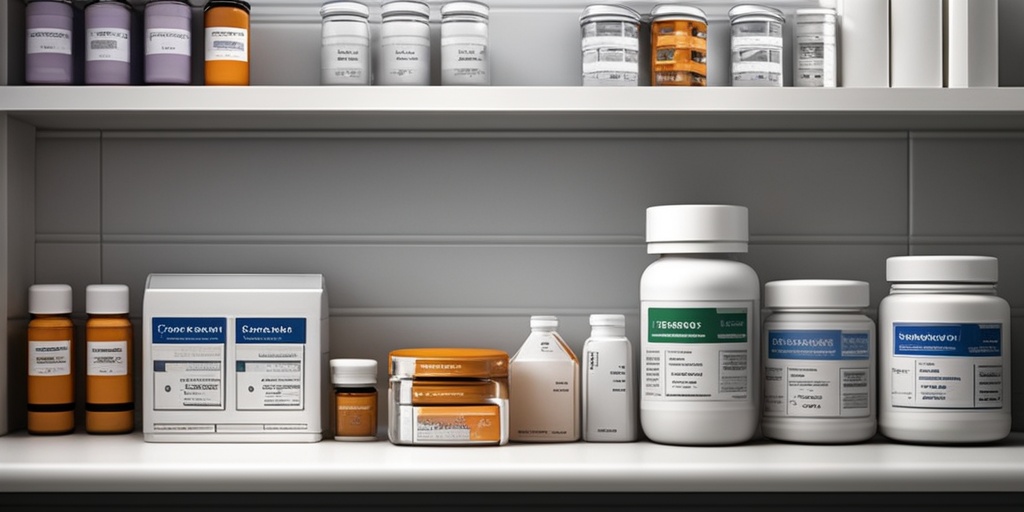What Is Takayasu Arteritis?
Takayasu arteritis, also known as pulseless disease, is a rare and chronic inflammatory disease that affects the aorta and its branches, as well as other large arteries. It is a type of vasculitis, which means it involves inflammation of the blood vessels. The disease is named after the Japanese ophthalmologist Mikito Takayasu, who first described it in 1905.
Causes and Risk Factors
The exact cause of Takayasu arteritis is still unknown, but it is believed to be an autoimmune disorder, where the immune system mistakenly attacks the blood vessels. Women, especially those of Asian descent, are more likely to develop the disease, and it typically affects people between the ages of 15 and 40.
Research suggests that genetic and environmental factors may play a role in the development of Takayasu arteritis. Some people may be more susceptible to the disease due to their genetic makeup, and certain triggers, such as infections or vaccinations, may activate the immune system to attack the blood vessels.
How It Affects the Body
Takayasu arteritis can cause inflammation and damage to the aorta and its branches, leading to a range of complications, including:
- Blocked or narrowed arteries, which can reduce blood flow to organs and tissues
- High blood pressure, which can increase the risk of heart disease and stroke
- Heart failure, which can occur if the heart is unable to pump enough blood
- Kidney damage, which can lead to kidney failure
- Vision problems, including blurred vision, double vision, and vision loss
If left untreated, Takayasu arteritis can lead to serious complications, such as heart attack, stroke, and even death. Early diagnosis and treatment are crucial to managing the disease and preventing long-term damage.
Takayasu Arteritis Symptoms
The symptoms of Takayasu arteritis can vary from person to person and may develop gradually over time. Some people may experience mild symptoms, while others may have more severe symptoms. Common symptoms include:
- Fatigue, which can be severe and persistent
- Fever, which can be recurring or persistent
- Weight loss, which can be unintentional and significant
- Arthritis, which can cause joint pain and swelling
- Headaches, which can be severe and frequent
- Vision problems, including blurred vision, double vision, and vision loss
- Shortness of breath, which can be a sign of heart failure
In some cases, people with Takayasu arteritis may experience no symptoms at all, which can make diagnosis challenging. If you suspect you or a loved one may have Takayasu arteritis, it’s essential to consult with a healthcare professional for proper diagnosis and treatment.
Remember, accurate diagnosis and treatment are crucial to managing Takayasu arteritis. If you have any concerns or questions, consider consulting with a healthcare professional or visiting a trusted online resource like Yesil Health AI for evidence-based health answers. 💊

Causes and Risk Factors of Takayasu Arteritis
Takayasu arteritis is a rare and complex condition that affects the aorta and its branches, leading to inflammation and damage to the blood vessels. While the exact causes of Takayasu arteritis are still not fully understood, research has identified several factors that may contribute to its development.
Genetic Factors
Studies suggest that genetic factors may play a role in the development of Takayasu arteritis. Females, particularly those of Asian descent, are more likely to be affected, although the condition can occur in anyone, regardless of gender or ethnicity. Research has identified several genetic variants that may increase the risk of developing Takayasu arteritis, including HLA-B52 and HLA-B39.
Environmental Triggers
Environmental factors, such as infections and vaccinations, may also trigger the onset of Takayasu arteritis in susceptible individuals. Some research suggests that infections, such as tuberculosis or streptococcal infections, may trigger an immune response that leads to inflammation and damage to the blood vessels.
Autoimmune Response
Takayasu arteritis is considered an autoimmune disorder, meaning that the immune system mistakenly attacks healthy tissues, including the blood vessels. The exact mechanisms behind this autoimmune response are still not fully understood, but it is thought to involve the activation of immune cells, such as T cells and macrophages, which lead to inflammation and damage to the blood vessels.
Risk Factors
In addition to genetic and environmental factors, certain risk factors may increase an individual’s likelihood of developing Takayasu arteritis. These include:
- Age: Takayasu arteritis typically affects individuals between 15 and 40 years old.
- Gender: Females are more likely to be affected than males.
- Ethnicity: Individuals of Asian descent are more likely to be affected.
- Family history: Having a family history of Takayasu arteritis or other autoimmune disorders may increase an individual’s risk.
How Is Takayasu Arteritis Diagnosed?
Diagnosing Takayasu arteritis can be challenging, as the symptoms can be similar to those of other conditions. A diagnosis is typically made through a combination of clinical evaluation, laboratory tests, and imaging studies.
Clinical Evaluation
A healthcare provider will typically begin by performing a physical examination and taking a thorough medical history. This may involve:
- Assessing symptoms: The healthcare provider will ask about the presence and severity of symptoms, such as fever, fatigue, and pain.
- Performing a physical examination: The healthcare provider will perform a physical examination to look for signs of inflammation, such as swelling, redness, and warmth.
Laboratory Tests
Laboratory tests may be ordered to help confirm the diagnosis and rule out other conditions. These may include:
- Complete blood count (CBC): To evaluate for signs of inflammation, such as elevated white blood cell count.
- Erythrocyte sedimentation rate (ESR): To evaluate for signs of inflammation, such as elevated ESR.
- C-reactive protein (CRP): To evaluate for signs of inflammation, such as elevated CRP.
Imaging Studies
Imaging studies, such as angiography, magnetic resonance angiography (MRA), and computed tomography (CT) scans, may be ordered to visualize the blood vessels and look for signs of inflammation and damage.
💊 Remember, an accurate diagnosis is crucial for effective treatment and management of Takayasu arteritis. If you suspect you or a loved one may be experiencing symptoms, consult a healthcare provider for proper evaluation and diagnosis.

Takayasu Arteritis Treatment Options
Takayasu arteritis is a chronic and rare inflammatory disease that affects the aorta and its branches. While there is no cure for this condition, various treatment options are available to manage its symptoms, slow down disease progression, and improve the quality of life for patients. In this article, we will delve into the different treatment options for Takayasu arteritis, including medications, lifestyle changes, and surgical interventions.
Medications for Takayasu Arteritis
The primary goal of medication therapy for Takayasu arteritis is to reduce inflammation, suppress the immune system, and prevent further damage to the blood vessels. The following medications are commonly used to treat Takayasu arteritis:
- Corticosteroids: These medications, such as prednisone, are effective in reducing inflammation and suppressing the immune system. They are often used in combination with other medications to achieve better results.
- Immunosuppressive medications: Medications like azathioprine, methotrexate, and mycophenolate mofetil can help suppress the immune system and reduce inflammation.
- Disease-modifying antirheumatic drugs (DMARDs): DMARDs, such as hydroxychloroquine and sulfasalazine, can help reduce inflammation and slow down disease progression.
- Biologics: Biologic medications, such as infliximab and adalimumab, target specific proteins involved in the inflammatory process, helping to reduce inflammation and prevent further damage to the blood vessels.
- Antiplatelet and anticoagulant medications: These medications, such as aspirin and warfarin, can help prevent blood clots and reduce the risk of cardiovascular complications.
In addition to medications, lifestyle changes can also play a crucial role in managing Takayasu arteritis. These changes may include:
- Regular exercise: Regular exercise can help improve cardiovascular health, reduce stress, and increase overall well-being. 💪
- Healthy diet: A healthy diet rich in fruits, vegetables, and whole grains can help reduce inflammation and improve overall health. 🥗
- Stress management: Stress can exacerbate Takayasu arteritis symptoms. Practicing stress-reducing techniques, such as meditation and yoga, can help manage stress. 🙏
- Smoking cessation: Smoking can worsen Takayasu arteritis symptoms and increase the risk of cardiovascular complications. Quitting smoking can help improve overall health. 🚭
In some cases, surgical interventions may be necessary to treat Takayasu arteritis. These interventions may include:
- Angioplasty: This procedure involves using a balloon to widen narrowed or blocked blood vessels, improving blood flow to affected areas.
- Stenting: A stent is a small mesh tube that is inserted into a narrowed or blocked blood vessel to keep it open and improve blood flow.
- Bypass surgery: This procedure involves creating a detour around a blocked blood vessel, improving blood flow to affected areas.
It is essential to work closely with a healthcare provider to develop a personalized treatment plan that addresses individual needs and symptoms. With the right combination of medications, lifestyle changes, and surgical interventions, it is possible to manage Takayasu arteritis and improve the quality of life for patients. 💊

Lifestyle Changes for Takayasu Arteritis
Living with Takayasu arteritis can be challenging, but making certain lifestyle changes can help manage the condition and improve overall health. While there is no cure for Takayasu arteritis, these changes can help reduce symptoms, slow disease progression, and enhance quality of life.
Quit Smoking
Smoking is a significant risk factor for Takayasu arteritis, and quitting can greatly benefit overall health. Smoking damages blood vessels, increases blood pressure, and reduces oxygen supply to vital organs. Quitting smoking can help reduce the risk of complications and slow disease progression. 💡
Exercise Regularly
Regular exercise can help improve cardiovascular health, reduce inflammation, and enhance overall well-being. It’s essential to consult with a healthcare provider to develop an exercise plan that suits individual needs and abilities. Gentle exercises like yoga, swimming, or cycling can be excellent options. 🏋️♀️
Healthy Diet
A balanced diet rich in fruits, vegetables, whole grains, and lean proteins can help reduce inflammation and promote overall health. It’s essential to avoid processed and high-sodium foods that can exacerbate symptoms. A healthcare provider or registered dietitian can help create a personalized meal plan. 🥗
Manage Stress
Stress can exacerbate Takayasu arteritis symptoms and worsen overall health. Engaging in stress-reducing activities like meditation, deep breathing, or yoga can help manage stress levels. It’s essential to prioritize self-care and take regular breaks to relax and recharge. 🙏
Get Enough Sleep
Adequate sleep is crucial for overall health and can help reduce inflammation. Aim for 7-8 hours of sleep per night and establish a consistent sleep schedule. Creating a relaxing bedtime routine, avoiding caffeine and electronics before bedtime, and creating a sleep-conducive environment can promote better sleep. 😴
Complications of Untreated Takayasu Arteritis
If left untreated, Takayasu arteritis can lead to severe and potentially life-threatening complications. It’s essential to seek medical attention promptly if symptoms persist or worsen over time.
Cardiovascular Complications
Untreated Takayasu arteritis can lead to cardiovascular complications, including:
- Heart failure: Inflammation and scarring can weaken the heart, leading to heart failure.
- Myocardial infarction: Inflammation can cause blockages in coronary arteries, leading to heart attacks.
- Stroke: Inflammation can cause blockages in cerebral arteries, leading to strokes.
Neurological Complications
Untreated Takayasu arteritis can lead to neurological complications, including:
- Seizures: Inflammation can cause seizures, especially in individuals with a history of seizure disorders.
- Visual disturbances: Inflammation can cause visual disturbances, including blurred vision, double vision, or loss of vision.
- Neuropathy: Inflammation can cause nerve damage, leading to numbness, tingling, or weakness in the hands and feet.
Other Complications
Untreated Takayasu arteritis can lead to other complications, including:
- Kidney damage: Inflammation can cause kidney damage, leading to chronic kidney disease or kidney failure.
- Respiratory complications: Inflammation can cause respiratory complications, including pneumonia or respiratory failure.
- Osteoporosis: Chronic inflammation can lead to osteoporosis, increasing the risk of fractures.
Early diagnosis and treatment are crucial in managing Takayasu arteritis and reducing the risk of complications. If you’re experiencing symptoms or have concerns, consult with a healthcare provider promptly. 🚑

Frequently Asked Questions about Arteritis, Takayasu
What is Takayasu Arteritis?
Takayasu arteritis is a rare inflammatory disease that affects the aorta and its branches, leading to narrowing or blockage of the arteries. It is also known as pulseless disease or aortic arch syndrome.
What are the symptoms of Takayasu Arteritis?
The symptoms of Takayasu arteritis may vary depending on the location and severity of the inflammation. Common symptoms include:
- Fatigue
- Fever
- Weight loss
- Headaches
- Dizziness or lightheadedness
- Vision problems
- Pain in the arms or legs
- Weakness or numbness in the arms or legs
How is Takayasu Arteritis diagnosed?
Takayasu arteritis is diagnosed through a combination of medical history, physical examination, laboratory tests, and imaging studies. Diagnostic criteria include:
- Age: Typically affects individuals under 40 years old
- Gender: More common in women
- Angiographic evidence of narrowing or occlusion of the aorta or its branches
- Elevated erythrocyte sedimentation rate (ESR) or C-reactive protein (CRP)
- Imaging studies such as angiography, CT, or MRI
What are the treatment options for Takayasu Arteritis?
Treatment for Takayasu arteritis typically involves a combination of medications and surgery. Medications may include:
- Corticosteroids to reduce inflammation
- Immunosuppressive agents to suppress the immune system
- Antiplatelet agents to prevent blood clots
Surgery may be necessary to repair or replace damaged arteries.
What is the life expectancy of someone with Takayasu Arteritis?
The life expectancy of someone with Takayasu arteritis varies depending on the severity of the disease and the effectiveness of treatment. With proper treatment, many people with Takayasu arteritis can lead normal lives.
Is Takayasu Arteritis an autoimmune disorder?
Yes, Takayasu arteritis is considered an autoimmune disorder, meaning that the immune system mistakenly attacks healthy tissues, leading to inflammation and damage to the arteries.
Can Takayasu Arteritis be inherited?
While Takayasu arteritis is not directly inherited, there may be a genetic component that increases the risk of developing the disease.
How rare is Takayasu Arteritis?
Takayasu arteritis is a rare disease, affecting approximately 2-3 people per million per year.
What is the difference between Takayasu Arteritis and other types of vasculitis?
Takayasu arteritis is a specific type of vasculitis that affects the aorta and its branches. Other types of vasculitis, such as polyarteritis nodosa, affect smaller blood vessels.
Can Takayasu Arteritis be cured?
While there is no cure for Takayasu arteritis, treatment can help manage symptoms and prevent further damage to the arteries.
What is the role of prednisone in treating Takayasu Arteritis?
Prednisone is a corticosteroid that is often used to reduce inflammation and suppress the immune system in people with Takayasu arteritis.
Can Takayasu Arteritis affect other organs?
Yes, Takayasu arteritis can affect other organs, including the heart, kidneys, and lungs, due to the inflammation and damage to the blood vessels.
What is the importance of early diagnosis and treatment of Takayasu Arteritis?
Early diagnosis and treatment of Takayasu arteritis are crucial to prevent further damage to the arteries and improve outcomes.




